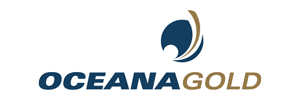Last week global mining company OceanaGold made a commitment to immediate climate action, releasing a new statement of position on climate change that sets a net zero operational greenhouse emissions goal by 2050.
According to S&P Global, nearly 1.0 tonnes of CO2e (carbon dioxide equivalent) was emitted per ounce of gold produced globally in 2019[1], so it comes as no surprise that climate change has become a critical focus for the gold mining industry.
OceanaGold is already on track to reduce its carbon footprint. At 0.53 tonnes of CO2e per ounce of gold produced in 2019, OceanaGold's emissions are much lower than the global average.
With increasing concerns about the industry's impact on climate change and a growing environmental and social governance (ESG) focus from investors around the world, many organisations are planning for a just process to move to a net zero economy and society.
Climate change also presents a financial risk to the global economy. The Task Force on Climate-related Financial Disclosures (TCFD) provides a framework to help organisations effectively report on climate risk, becoming the benchmark for ESG reporting on climate risk management and performance.
OceanaGold has established a roadmap of strategic actions to help reduce the company's carbon footprint and improve energy management, including:
- Setting the goal to achieve net zero GHG emissions by 2050
- Establishing milestone interim emission targets by the end of 2021
- Establishing a climate change Technical Coordinating Committee to identify opportunities to reduce GHG emission intensity, and identify risks, opportunities, priorities and associated costs
- Undertaking climate change management and reporting to meet the requirements of the TCFD.
Setting the foundation
OceanaGold has a solid understanding of its current carbon emission and is a low greenhouse gas (GHG) emitter compared to the global gold mining average.
Michael Holmes, President and Chief Executive Officer at OceanaGold said the company had been deeply committed to responsible mining for 30 years and was proud to be taking action to manage its carbon footprint.
"There is a long way to go, and our journey to net zero emissions won't be linear. It will vary depending on production cycles, national infrastructure constraints and company growth opportunities," Michael said.
OceanaGold aims to achieve the carbon reduction goal through the implementation of four key strategic areas:
- Improved energy efficiency and energy reduction
- Decarbonisation of electrical energy supply
- Decarbonisation of mobile equipment fuel
- Carbon sequestration.
"Deliberate and timely implementation of the four key carbon reduction strategies can reduce GHG emission intensity in line with OceanaGold's goal and targets," Michael said.
Macraes, a journey to a low-emissions gold mine
At the Macraes mine on the South Island of New Zealand, OceanaGold has already started scoping what a possible net zero carbon mine looks like.
Matthew Hine, General Manager for the Macraes Operation said this included the opportunity to implement a partial conversion of its fleet to electricity and biodiesel, and offset carbon dioxide emissions by increasing forestry offsets.
"Electrifying some of the mining fleet and blending biodiesel into the existing diesel consumption would reduce Scope 1 emissions by as much as 43 per cent" Matthew said.
"Macraes has partnered with the New Zealand Energy Efficiency and Conservation Authority (EECA) to bring on an Energy Engineer who will work with us to integrate renewables and identify opportunities to continuously reduce our environmental impact," he said.
Looking to the future
Setting a goal is only the first step. OceanaGold will now turn its focus to implementing the recommendations of the Task Force on Climate-related Financial Disclosures (TCFD) and set clear actions and activities for the future.
Michael Holmes, President and Chief Executive Officer at OceanaGold said since 2018, OceanaGold had been implementing a company-wide program of automation, digital and process transformation called ADaPT, which was helping the company define its journey to operate the mines of the future.
"Digital transformation presents an industry-wide opportunity to enhance performance and reduce impact. Our commitment for 2020 was to develop strategies to mitigate the risks associated with climate change and establish measures and targets to improve the efficiency of our energy use and to minimise our greenhouse gas emissions intensity," Michael said.
"A central part of the industry's commitment to reducing its impact on climate is technology, this is where the opportunity lies. Rapid advances in technology innovation, including automation, digitisation and electrification are central to the mining industry's commitment to reducing its environmental impact," he said.
[1] https://pages.marketintelligence.spglobal.com/greenhouse-gas-and-gold-mines-EMC.html
ABOUT THIS COMPANY
OceanaGold
OceanaGold is a multinational gold producer with global operating, development and exploration experience.
HEAD OFFICE:
- Level 3, 99 Melbourne St, South Brisbane Qld 4101, Australia
- Tel: +61 3 9656 5300
- Email: info@oceanagold.com
- Web: www.oceanagold.com/



























